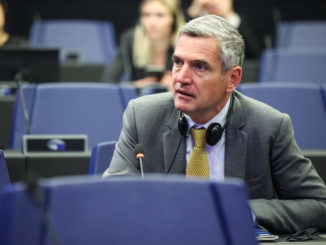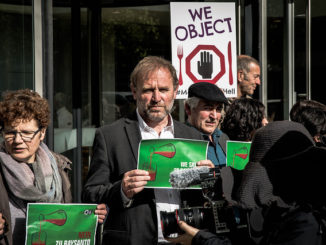
The European Commission published its Communication on A long-Term Vision for the EU’s rural areas on Wednesday June 30th. There is much that’s worth recognising and lauding in this, including a new ‘Rural Pact’. However there are serious gaps and significant blind spots. In particular, the how and when elements – strategy and immediacy – are conspicuous in their absence.
The European Commission published its Communication on A long-Term Vision for the EU’s Rural Areas (LTVRA) on Wednesday June 30th. The aim of this process and document is to make rural areas and communities “stronger, connected, resilient and prosperous”.
Indeed these four attributes are core to the Vision: strong is about stakeholder engagement, governance, services and digital tools; connected refers to public transport and digital infrastructures; resilient to sustainable bio- and circular economies in a context of maintaining natural and cultural resources, while coping with climate, natural and economic crises; while prosperous is about diversification, value-adding, employment, incoming enterprise and digital literacy.
To make this all happen, an ‘EU Rural Action Plan’ is to be articulated around flagship initiatives and a “Rural Pact” aims to “mobilise public authorities, and stakeholders to act on the needs and aspirations of rural residents”.
Analysis
Throughout the Communication’s consultation process, ARC2020 stated that some simple things could help make this Vision impactful. We demanded that the Vision should not be kept separate from CAP reform; a new vision for 2040 must find its way into the CAP legislative framework for 2021 – 2027, including with distinct CAP measures linked to the objectives of the Farm to Fork and the Biodiversity Strategies.
We also emphasised that, to deliver on the promises of an ambitious vision, a clear, well-resourced strategy would be needed to put into practice big picture ideas. A set of immediate actions that reflect the diverse needs and the promising potential of rural people and rural-urban relations to respond to the enormous challenges we collectively face is key.
A ‘Rural Pact’ and an ‘EU Rural Action Plan’
One of the cornerstones of this Rural Vision is the plan to “develop and facilitate” a ‘Rural Pact’ with all levels of governance and stakeholders supporting the Vision’s shared goals. Who exactly will elaborate and agree on such a pact? Unfortunately, this central aspect remains vague.
It also proposes an ‘EU Rural Action Plan’ to be articulated around flagship initiatives. At the basis of the Action Plan are EU policies including the Common Agricultural Policy (CAP) and Cohesion Policy that already provide support for rural areas. These however, crucially, have never been integrated. On the contrary, existing agreements as provided for in the common provisions regulation have been abandoned.
Finally, the Communication issues an invitation to Member States “to seize the opportunities offered by the CAP Strategic Plans & the Cohesion Policy programmes for the 2021-2027 period to prompt sustainable & integrated rural development.” However, this invitation to Member States to “seize the opportunities” in the CAP Strategic Plans and Cohesion Policy Programmes for the 2021-2027 period seems futile because the Communication does not propose a mechanism for assessing and influencing these programmes that are currently being developed.
We at ARC still insist that the CAP trilogues and the rural vision process should not have been, and should not continue to be, kept apart in the process of hammering out the national CAP strategic plans. Since the CAP legislative framework is now agreed, the LTVRA should be taken into account when Member States make their CAP Strategic Plans submissions to the European Commission. However, the Commission has not suggested a binding requirement to do so, just recommended that Member States “should” use the CAP Strategic Plans to “prompt sustainable and integrated rural development”. That is a weak and meaningless incentive for those less willing to embrace the aims and objectives of balanced, resilient rural areas.
While the Communication mentions the LEADER approach, it does not specify plans to earmark any additional funding or simplify the existing administrative burden associated with LEADER measures..
Rural development actions should build on the experience of the long standing success stories of the early LEADER Programmes and Community Led Local Development (CLLD) and be focused through integrated sub-regional development strategies designed and managed by local people and multi-sectoral territorial partnerships.
In short, LEADER should be emphasised and amplified, not just named-checked and passed by.
Lack of concrete proposals
It seems that in the short-term at least, the Communication has again found many warm words on what should be done in principle, trying to highlight opportunities in the 2021 – 2027 budget without suggesting distinctive actions, and proposing a number of non-legislative measures geared towards the Vision’s realisation.
These non-legislative measures include another “toolkit” on how to access and use EU funding opportunities for rural areas in the 2021 – 2027 budget and a ‘one-stop shop’ where rural stakeholders may find information on projects and financing.
Implementation: Rural proofing, Rural Observatory and another Tool Kit
A rural proofing mechanism will be put in place, ‘notably to assess the anticipated impact of major EU legislative initiatives on rural areas. Its purpose will be to ensure coherence, consistency and complementarity between policies to benefit rural areas and communities. Rural proofing policy initiatives will increase their impact on the ground, says the Commission.’
In ARC’s Working Document on “A Vision and Strategy for Rural Europe – Now!” we propose a Rural Task Force for rural proofing and a procedure for recommendations of the Vision to be translated into guidance, operational principles, incentives, procedures, and criteria which help direct both Member States and the Commission in the joint management of the future CAP strategic plans and cohesion policy in rural areas.
We also contributed to the proposal of the Jacques Delor Institute for a Rural Semester, led by Marjorie Jouen, that including rural action into the Semester approach would differ from rural proofing as it would aim to increase “EU cohesion as a whole and does not focus on the new regulations and their impacts on specific areas, or on reducing gaps between different types of areas”
Conclusion
The new Communication of the European Commission is surface dressing on weak foundations – good news with little political impact. It is too little too late. It needs to be underpinned by strategies and immediate action to meaningfully champion the commonly cited challenges and opportunities of rural areas.
The common ambitions of the Vision need to be translated into differentiated and smart objectives, measurable targets and milestones with clear timing for them to be achieved. And responsible bodies and persons need to be appointed for the oversight of these elements. The moment of approving the national CAP Strategic Plans is the moment for the Commission to catch up with its own ambitions. Some level of real alignment here would be key, and would send out a strong signal that this Vision means something.
The Commission states that the Communication is only the first step in a process, with the Action Plan and Rural Pact to follow. But as of yet there is no proposal for more integrated governance within the competent EU Institutions themselves. Moreover no responsible person or body is identified to lead the Rural Action Plan, nor are the interservice and interdepartmental working parties to implement or track the Plans’ impacts. The remaining steps in this process are the time to solidify these elements.
The flagrant vagueness of the Long-Term Vision of the Commission and its reliance on existing policies, in and of themselves, and non-legislative measures to achieve the common ambitions it sets, leaves one looking for substance. Where are grasp-able premises for the promises? Is the Commission lost in time and space, when stating that “… the Rural Pact and the rolling EU Rural Action Plan should ultimately fulfil the objectives of the long-term Vision for the EU’s rural areas in 2040” ? There are simple, clear things that can be done – now – to make the vision a reality. Integrate it into the CAP SPs and other actual related policies; establish institutional responsibility (i.e. put someone in charge!); put real targets, timelines and other core strategic elements in. These things can still be done. And they will show whether this Vision is a mirage or an oasis.
More
A Rural Vision is Good – A Strategy and Immediate Action is Better
Western Balkans | Reviving Rural Areas & Moving Towards EU Integration
Rural Semester as a Tool to Deliver a Truly Holistic Policy for Rural Areas




